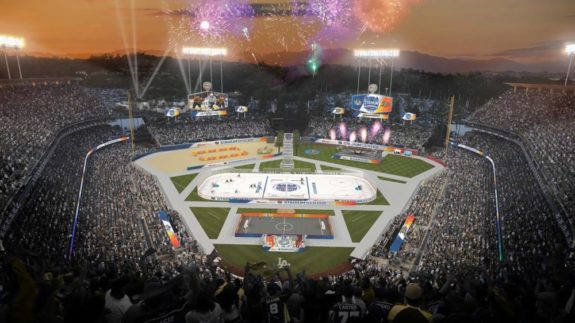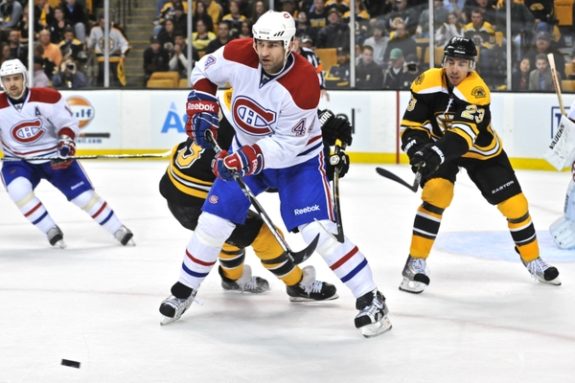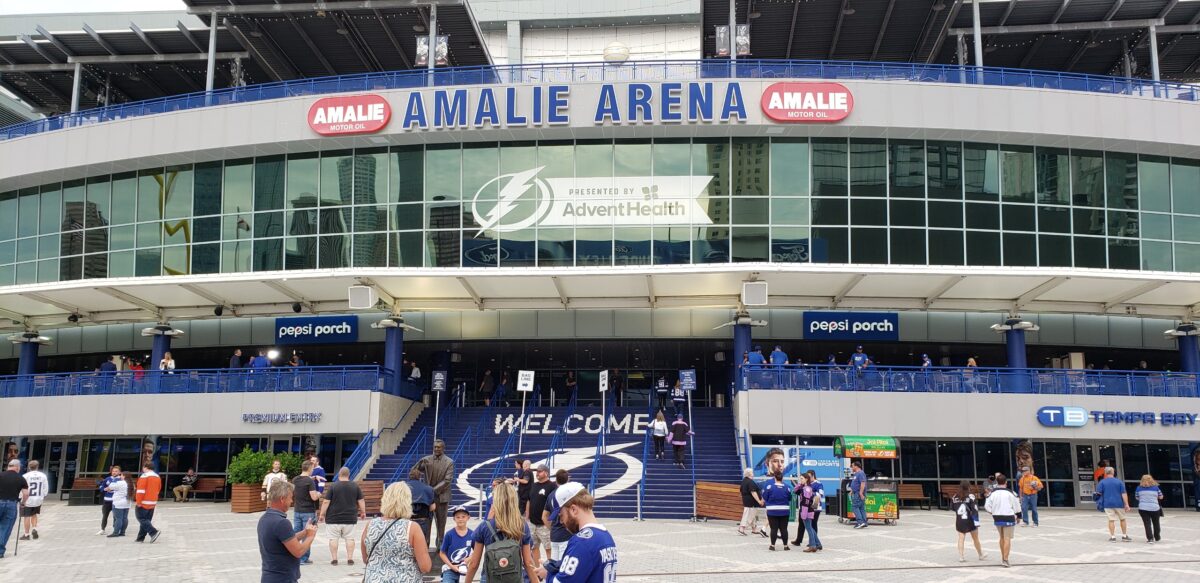Before there was baseball, there was hockey. Before the Stadium Series, before the Winter Classic, there was the Thunderdome.
Nowadays, playing hockey in an oversized venue is not unheard of. It’s still special to participate, but it happens multiple times a year even at the ballpark on three occasions.

However, there was a time when playing in a baseball stadium was a stepping stone in growing the game of hockey in the state of Florida.
The Perfect Timing
As the 1980s gave way to the 1990s, the push to expand the sports presence in the Tampa Bay Area went into high gear. On March 3, 1990, the Florida Suncoast Dome opened after over three years of construction.
It began to host events immediately but had no permanent tenant. It was built for baseball, and the city would see two failed close calls shortly after the opening of the stadium. First, the Chicago White Sox looked into moving there but wound up staying on the Southside. Then, the San Francisco Giants nearly switched which Bay Area they called home. But this would be struck down by the National League.
Related: Syracuse Crunch’s Blue Collar Play Paying Dividends
It would gain the Tampa Bay Storm of the Arena Football League (AFL) as a regular tenant in 1991, but that took up just 12 total days on the calendar, including playoffs. Fortunately, as the Suncoast Dome opened its doors, another addition to the community was on the horizon. Later that year in December, a group led by Hockey Hall of Famer Phil Esposito was awarded an NHL franchise in the Tampa Bay Area.
The Lightning began their inaugural 1992-93 season in the tiny Expo Hall at the Florida Fairgrounds. It could host a bit more than 10,000 fans per game. This opened up the perfect opportunity for the Florida Suncoast Dome. The Lightning saw the opportunity as well.
New Year, New Home for the Lightning
After one season at Expo Hall, the Lightning moved across the bay to St. Petersburg. The venue would change its name to something more fitting for a hockey team in the lightning capital of North America, the Thunderdome.
It was modified to make it a better viewing experience for hockey. Seats on one side of the ice were seats that were part of the actual structure. To help paint the picture, it can be seen when looked closely enough that the area behind what is now home plate, and the first baseline, are the areas used for Lightning games. The other side featured a temporary structure of seats where the outfield is now located. That same side featured large curtains to close off the rest of the stadium from view.
The Lightning were off to play in a makeshift arena where the plan was to put a baseball diamond. This sounds like it would be unacceptable today. It would be.
I spoke with Jay Williams, a former Lightning season ticket holder at the Thunderdome. He shared his thoughts and experiences of the peculiar home of the young NHL club.
“I knew people from Pittsburgh and other places who thought it was weird,” Williams said. “They thought that was not the feel of a true hockey arena.”
While those from traditional hockey markets questioned playing an NHL game in such a venue, locals, including Williams, were all for it.
“I thought it was fantastic because I had never experienced hockey before. I think most fans were like me because they hadn’t experienced hockey in a true arena like Amalie. We didn’t know any better, so we thought it was great.”
Floridians Show Up for a Cold-Weather Game
Attendance at Lightning games nearly doubled. According to HockeyDB.com, attendance in year one jumped from 10,014 to 19,398. This would be the second-highest attendance in the National Hockey League behind the Detroit Red Wings at Joe Louis Arena. They were second in attendance again in 1994-95 and third in 1995-96.

There were a number of reasons that can be attributed to the high turnout early on. A high-capacity arena like the Thunderdome allowed for admission at very low costs.
“It was $99 for season tickets to the upper deck,” Williams said. “I bought a pair of tickets for $200 which was crazy, and I think general admission started at rows 10 or 15 in the upper deck, and it was first come, first serve whenever you go there.”
A local hockey team also allowed fans to see many of the stars for the first time in person.
“You get guys like Gretzky and Eric Lindros at the time and Jaromir Jagr and Mario Lemieux and all these guys coming in. Even if you’re not a hockey fan, they’re household names – you knew the names.”
A fan favorite in that era was a defenseman named Enrico Ciccone, the team’s enforcer.
“It’s different than today,” Williams said. “It seemed this guy’s sole job was to fight…the crowd would go crazy when Ciccone would go out there and fight.”
Beyond seeing the stars and fan favorites, it was simply the novelty of hockey that helped. It was new. It was exciting.
“It wasn’t just hockey, it was the whole experience.”
Come playoff time, fans embraced the experience on another level. The Lightning took on the Flyers in the Stanley Cup Quarterfinal in 1996, splitting the first two games at The Spectrum before taking the series to St. Pete. For Game 4 on April 23, 1996, 28,183 fans were in attendance. At the time, this was the all-time attendance record for an NHL game.
The Stadium Series and Winter Classic numbers tower over this number now, but it remains a Stanley Cup Playoff record for attendance to this day. Early adopters of hockey in Florida left their mark and the mark remains in the record books.
A Unique Era for the Lightning Ends, But Leaves a Legacy
After the loss to the Flyers in Game 6 on April 27, 1996, the Lightning were eliminated from the playoffs and left the ice for the final time. They moved, along with the AFL Tampa Bay Storm, to their permanent home in the fall of 1996, where they still reside today. You might know it as the Ice Palace, or the St. Pete/Tampa Bay Times Forum or Amalie Arena.

The attendance numbers dwindled in the first few years for the Lightning in their new home. But the fans slowly returned, and now it looks like they’re never leaving.
But the era should still receive its credit for helping build the love for hockey in the State of Florida. Williams still watches every Lightning game he can. His kids played hockey. The opportunity to play hockey for a kid in Florida is now possible. The Lightning don’t get to make this push to grow the sport without getting the chance to root themselves in a region while playing in a baseball stadium.
There’s Still Time for a Reunion
The Thunderdome has been called Tropicana Field, or the Trop, for over 25 years. It’s the home of the Tampa Bay Rays for at least a short remaining amount of time. With the time remaining, there is still the chance for a new generation to experience the Thunderdome at least once.
Picture this: The Stadium Series comes to St. Petersburg. Due to the warm climate, a game at Raymond James Stadium may not be doable. But the domed Tropicana Field makes it possible. After all, it has the experience. The Lightning can wear throwbacks to the era and all 42,000 seats at Tropicana Field can be used this time.
“They tend to like putting the Winter Classics in historic outdoor venues,” Williams said. “So I am not sure how much the rest of the hockey world would appreciate it. But, I think Lightning fans would love it for one game.”
In five years, the Rays will join the Lightning as having the domed stadium in St. Petersburg as their former home. After that, the community will bid farewell to it. Until that time, there’s still the chance to run it back one more time.
